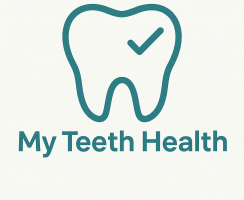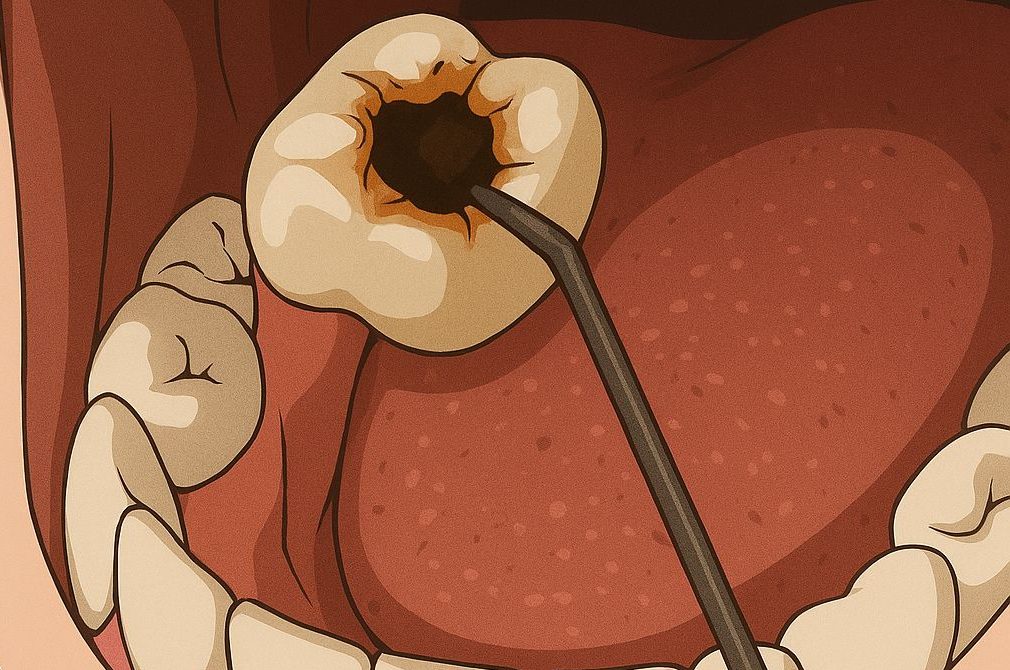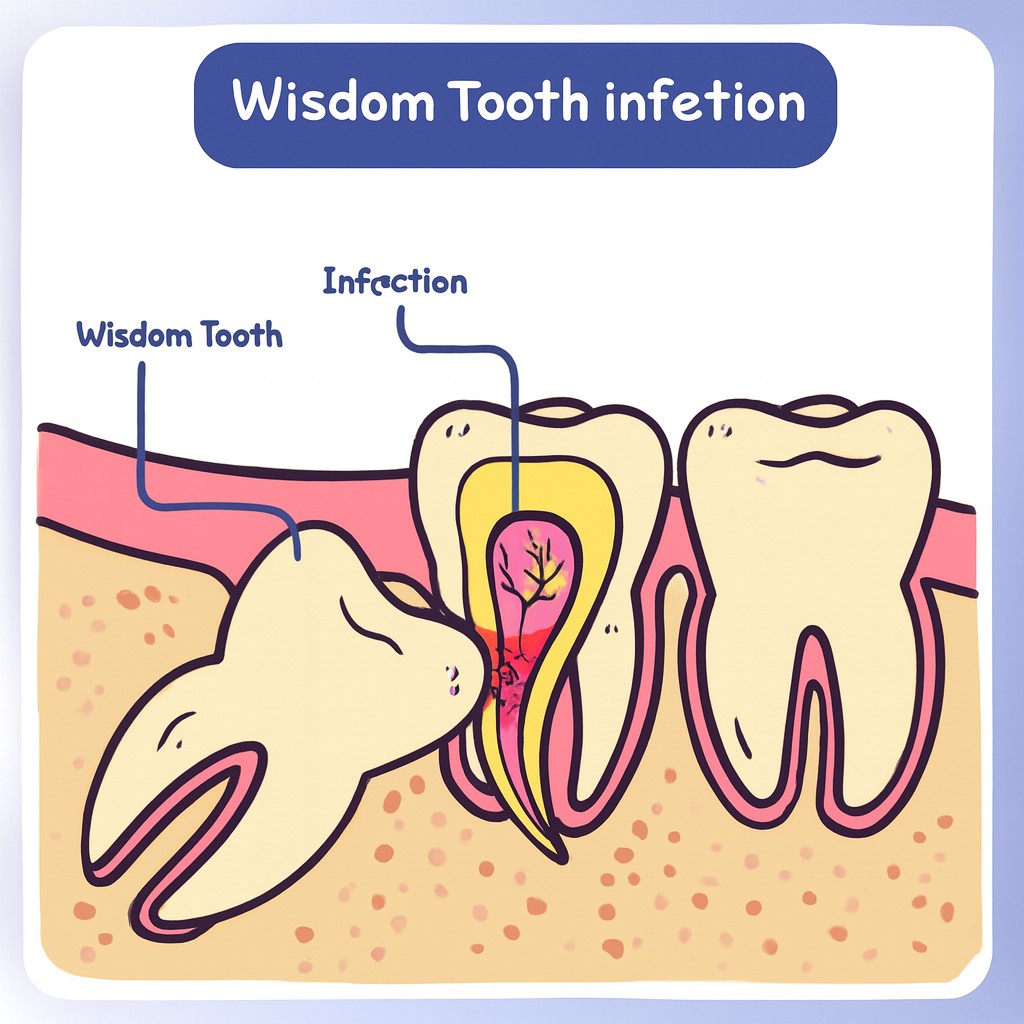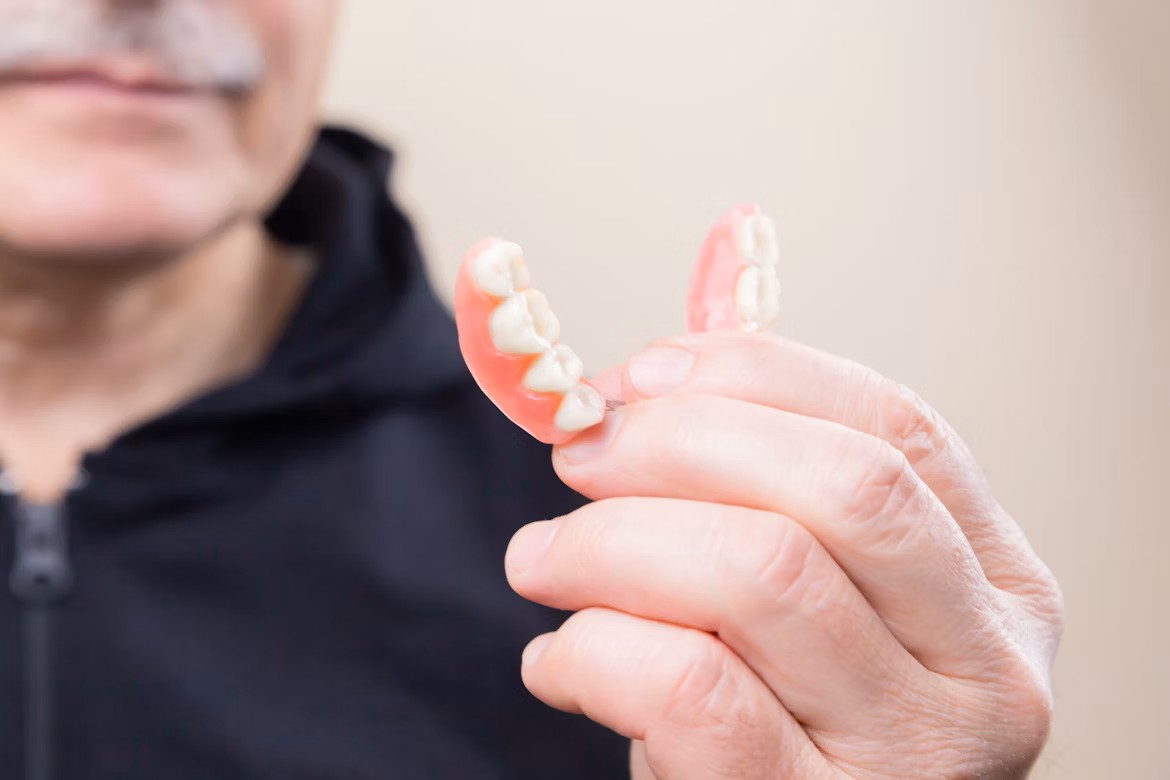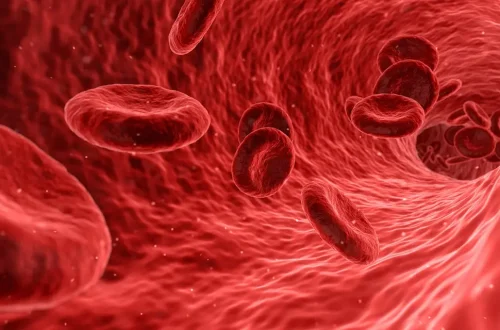Wisdom teeth, often called third molars, are the last set of molars to come in, usually between the ages of 17 and 25. While some folks sail through this stage without any issues, others might face some pretty uncomfortable wisdom tooth pain that can make eating, talking, and even sleeping a challenge. Common culprits for this discomfort include gum infections, impaction, or decay. By learning about the causes, recognising the symptoms of wisdom tooth pain, and exploring professional treatment options, you can find quick relief and enjoy long-lasting comfort.
Why Do I Have Wisdom Tooth Pain?
Most cases of wisdom tooth pain occur when the tooth doesn’t have enough room to emerge properly. Impacted or partially erupted teeth can trap bacteria and food, leading to inflammation and infection. Early detection of wisdom tooth pain symptoms allows for faster diagnosis and effective management before the problem worsens.
Causes of Wisdom Tooth Pain
- Impacted wisdom teeth that fail to fully erupt and press against nearby molars.
- Infections in the gums surrounding the tooth, often resulting in throbbing wisdom tooth pain.
- Decay or cavities in the wisdom tooth caused by difficult cleaning access.
- Crowding that pushes or tilts adjacent teeth, increasing pressure and discomfort.
- Inflammation of surrounding tissue or periodontal issues linked to poor hygiene.
Symptoms to Watch For
Recognising wisdom tooth pain symptoms early prevents complications. If your wisdom tooth pain intensifies when chewing or brushing, it’s important to take note and plan a dental check-up soon.
- Persistent ache or throbbing at the back of the jaw: This is a classic wisdom tooth pain symptom, especially when it radiates to the ear or neck.
- Swollen or bleeding gums: The gum tissue around the erupting tooth can become inflamed, leading to soreness and wisdom tooth pain when eating solid foods.
- Bad breath or pus discharge: These indicate infection requiring urgent wisdom tooth pain treatment.
- Headache or jaw stiffness: Sometimes wisdom tooth pain spreads, causing muscle tension and difficulty opening your mouth.
Home Remedies for Wisdom Tooth Pain Relief
For many people, mild to moderate wisdom tooth pain can be managed at home before seeking professional treatment. The key is to combine effective remedies with proper precautions to avoid worsening the pain or causing infection. Here’s a detailed, practical guide on home remedies that provide quick relief for wisdom tooth pain.
Over-the-Counter Medicine
Non-prescription medications are often the first line of defence for wisdom tooth discomfort:
- NSAIDs (Non-Steroidal Anti-Inflammatory Drugs): Ibuprofen or naproxen reduce both pain and inflammation. Take the recommended dose on the label, usually with food to prevent stomach irritation. Do not exceed the daily limit.
- Acetaminophen (Paracetamol): Offers pain relief if NSAIDs are not suitable. It can be alternated with NSAIDs under proper guidance for continuous relief.
- Topical gels or ointments: Some oral pain relief gels containing benzocaine or lidocaine can numb the gums temporarily. Apply directly to the affected area using a clean finger or cotton swab. Avoid swallowing large amounts and do not use in children under 2 years old.
Precautions: Always read the label carefully, avoid overdosing, and consult a doctor if you have underlying medical conditions like liver or kidney problems, or if you’re taking other medications.
Natural and DIY Remedies
Natural remedies are safe and accessible, providing effective short-term relief when used correctly:
- Saltwater rinse: Dissolve half a teaspoon of salt in a cup of warm water. Rinse your mouth gently for 30 seconds and spit it out. Repeat 2–3 times a day. Saltwater helps reduce inflammation, kills bacteria, and promotes healing. Note: Do not swallow the solution and avoid vigorous rinsing to prevent irritating the gums.
- Ice packs: Apply a cold pack or a clean cloth filled with ice to the outside of the cheek for 15–20 minutes at a time. This helps numb the area and reduce swelling. Tip: Take breaks of at least 10 minutes between applications to avoid frostbite or skin irritation.
- Clove oil: Clove oil contains eugenol, a natural analgesic and antibacterial agent. Soak a small cotton ball in a few drops of clove oil and gently place it on the affected gum. Leave it for 5–10 minutes and remove. Do not swallow clove oil, and avoid overuse as it can irritate the gums.
- Warm compress: If pain is accompanied by jaw stiffness, a warm compress on the outside of your cheek can relax muscles and improve blood circulation. Alternate between cold and warm compresses if swelling is present.
- Hydrogen peroxide rinse (optional): Dilute 3% hydrogen peroxide with equal parts water and use as a mouth rinse 1–2 times per week. This helps reduce bacterial growth, but avoid frequent use to prevent gum irritation.
How to Endure Wisdom Tooth Pain at Home
Alongside remedies, lifestyle adjustments can significantly reduce discomfort and prevent aggravation:
- Diet adjustments: Eat soft foods like yogurt, mashed potatoes, soups, and smoothies. Avoid hard, crunchy, or sticky foods that can irritate the wisdom tooth or trapped food debris.
- Oral hygiene: Brush gently around the painful area and floss carefully to avoid injury. Maintaining clean teeth prevents infection, which can worsen wisdom tooth pain.
- Posture and rest: Avoid leaning forward or resting your chin on your hand, which can add pressure to the jaw. Ensure proper sleep and take short breaks during the day to allow the jaw to relax.
- Hydration: Drink plenty of water to keep your mouth clean and reduce bacterial growth. Avoid sugary drinks that can contribute to decay.
- Stress management: Pain perception increases with stress. Gentle meditation or deep breathing can help tolerate discomfort.
Using these home remedies with care can provide significant relief from wisdom tooth pain, but they are temporary solutions. Persistent pain, swelling, or signs of infection should prompt a consultation with a dentist for proper wisdom tooth pain treatment.
Professional Treatments and Wisdom Tooth Extraction
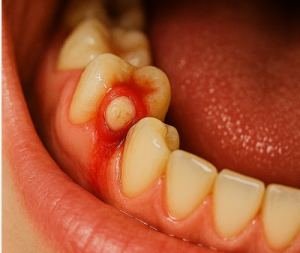
If home remedies no longer control your wisdom tooth pain, it’s time for professional assessment. Dental treatment provides long-term wisdom tooth pain relief and prevents infection, nerve compression, or cyst formation. Early consultation helps you plan for the wisdom tooth extraction fee and recovery timeline before the problem escalates.
When to See a Dentist
Persistent or severe wisdom tooth pain that lasts more than 48–72 hours requires prompt attention. Signs such as swelling, pus discharge, or wisdom tooth pain when eating are red flags for infection. Visiting a dentist early ensures accurate wisdom tooth pain treatment and reduces future complications.
- Pain persisting beyond three days: If your wisdom tooth pain doesn’t respond to medicine or saltwater rinses, schedule an appointment.
- Swelling or jaw stiffness: These symptoms may suggest an abscess needing urgent care and possible extraction.
- Recurrent infections or bleeding gums: Frequent flare-ups require evaluation to determine if wisdom tooth extraction is necessary.
- Numbness or altered sensation: Can indicate nerve pressure from an impacted tooth.
Preparation Before the Appointment
Being organised makes your visit smoother and helps your dentist decide whether conservative care or extraction is best.
- Record your wisdom tooth pain symptoms: when they started, severity, triggers, and any medication taken.
- Bring your full medical history and list of allergies or chronic conditions.
- Inform your dentist if you’re on blood thinners or have conditions affecting healing.
Early evaluation prevents emergency situations and supports faster wisdom tooth extraction recovery later on.
Wisdom Tooth Extraction
Extraction is often the definitive wisdom tooth pain treatment when the tooth is decayed, impacted, or repeatedly infected. Removing the problematic tooth eliminates the source of inflammation and provides lasting wisdom tooth pain relief.
Types of Extraction
- Simple extraction: Used for erupted teeth visible in the mouth. Local anaesthetic ensures a painless procedure and fast wisdom tooth extraction recovery.
- Surgical extraction: Required for impacted or broken teeth. A minor surgical flap is created to remove the tooth in sections. This approach may increase the wisdom tooth extraction fee but provides better long-term results.
- Operative extraction under sedation: Recommended for anxious patients or complex cases. Although the cost of wisdom tooth removal in Singapore may be higher in hospital settings, it ensures maximum comfort and safety.
Step-by-Step Procedure
- Review of medical history and discussion of anaesthetic options.
- Local anaesthetic or sedation is administered for a pain-free experience.
- Incision and, if needed, minor bone removal for impacted teeth.
- Tooth sectioning and extraction in pieces.
- Wound cleaning, irrigation, and suturing to support healing.
- Post-operative advice on how to take care after wisdom tooth extraction, including medication and hygiene.
Modern dental technology has made wisdom tooth pain relief during extraction significantly easier than before. Most patients report minimal discomfort and smooth wisdom tooth extraction recovery within a week when they follow their dentist’s after-care instructions.
9 Tips Before Wisdom Tooth Extraction
- Ensure adequate rest before your appointment.
- Take prescribed wisdom tooth pain medicine or antibiotics as advised.
- Avoid scheduling extraction during menstruation or when ill to improve recovery.
- Inform your dentist about allergies and medical conditions.
- Bite on gauze after the procedure to control bleeding.
- Follow the clinic’s guidance on how to take care after wisdom tooth extraction.
- Keep soft foods ready at home for post-surgery meals.
- Monitor the wound closely for infection or renewed wisdom tooth pain.
- Patients who are pregnant or immunocompromised should always consult their dentist first.
Immediate Post-Extraction Expectations
- Mild to moderate wisdom tooth pain and swelling are normal for the first two to three days.
- Take your dentist-prescribed analgesics at regular intervals for optimal wisdom tooth pain relief.
- If antibiotics are provided, complete the course to prevent infection and speed up wisdom tooth extraction recovery.
- Eat soft, cool foods and avoid hard or spicy meals until comfortable.
- Contact your clinic if pain intensifies or new swelling develops.
Cost Considerations
Understanding the financial aspect helps you prepare for treatment. The average cost of wisdom tooth removal depends on procedure complexity, clinic type, and sedation choice.
- Simple extraction: S$100 – S$400 per tooth.
- Surgical/impacted extraction: S$300 – S$1 500 per tooth.
- Hospital or specialist surgery: May include anaesthetist and facility charges; always request a written quotation for the full wisdom tooth extraction fee.
When patients ask how much is a wisdom tooth extraction, the answer varies by case, but most clinics in Singapore provide transparent pricing. Discuss insurance and MediSave eligibility beforehand to manage costs efficiently and ensure smooth wisdom tooth extraction recovery without financial stress.
Tips for Managing Pain After Extraction
Effective after-care is vital for smooth wisdom tooth extraction recovery. By following your dentist’s instructions closely, you can minimise swelling, maintain good hygiene, and achieve lasting wisdom tooth pain relief. The next few days are crucial for healing, so knowing how to take care after wisdom tooth extraction can make all the difference.
Pain Management Techniques
- Follow your medication plan: Take all prescribed wisdom tooth pain medicine on schedule, even if discomfort feels mild. Regular timing helps maintain steady wisdom tooth pain relief.
- Cold therapy: For the first 48 hours, apply ice packs to the cheek to reduce swelling and provide quick relief for wisdom tooth pain.
- Warm compresses after two days: A gentle warm cloth eases muscle tension and improves blood flow, supporting faster wisdom tooth extraction recovery.
- Rest with your head elevated: Keep your pillow slightly raised; it limits swelling and throb intensity.
- Avoid alcohol and nicotine: These delay healing and may trigger renewed wisdom tooth pain or dry socket.
Oral Hygiene After Extraction
Proper cleaning prevents infection while protecting the healing clot. Understanding how to brush teeth after wisdom tooth extraction is key to avoiding setbacks.
- First 24 hours: Do not rinse vigorously or brush over the wound. Keep the area undisturbed to allow the clot to form.
- After 24 hours: Rinse gently with warm saltwater twice daily. This classic wisdom tooth pain remedy helps reduce bacteria and promotes healing.
- Brushing tips: Use a soft-bristled brush. Move slowly around the extraction site and avoid strong suction motions. Following this method ensures a cleaner mouth and smoother wisdom tooth extraction recovery.
- Sutures: Dissolvable stitches will disappear within one to two weeks; otherwise, return for removal as advised.
- Mouthwash: Only use antiseptic rinses if your dentist recommends them.
Diet and Lifestyle Adjustments
Food choices play a major role in how to take care after wisdom tooth extraction.
- Eat soft foods: Soups, congee, yoghurt, and scrambled eggs are ideal during the first days of wisdom tooth extraction recovery.
- Avoid hard or spicy foods: Crunchy snacks may reopen the wound and cause renewed wisdom tooth pain when eating.
- No straws for a week: Suction can dislodge the clot and interrupt healing.
- Stay hydrated: Water supports tissue repair and reduces bacterial load.
- Rest adequately: Balanced rest and nutrition accelerate recovery and prevent lingering wisdom tooth pain.
If any swelling, fever, or severe wisdom tooth pain develops, contact your dental clinic immediately. Early review ensures safe healing and saves on unexpected wisdom tooth extraction fee adjustments for further procedures.
Preventing Future Wisdom Tooth Pain
Prevention is better than a cure. Schedule regular dental check-ups to monitor unerupted molars and maintain hygiene. Consistent cleaning and professional scaling reduce bacterial load and prevent infection. Long-term vigilance keeps wisdom tooth pain symptoms from recurring and lessens the likelihood of future extractions.
Myths that Stop You from Relieving Wisdom Tooth Pain
False beliefs often delay effective wisdom tooth pain treatment. Understanding what’s true helps you act confidently.
Myth 1: “I don’t need extraction if there’s no pain.”
Even without obvious wisdom tooth pain, hidden decay or cysts can develop. Preventive extraction avoids costlier intervention later and shortens the eventual wisdom tooth extraction recovery.
Myth 2: “Removal is extremely painful.”
Modern anaesthetics ensure minimal sensation. Most patients report only mild soreness managed easily with routine wisdom tooth pain medicine and a week of rest.
Myth 3: “It’s too expensive.”
While fees vary, many clinics in Singapore offer transparent packages. Discussing the total cost of wisdom tooth removal Singapore and available subsidies keeps treatment affordable and prevents prolonged wisdom tooth pain from untreated issues.
Myth 4: “Only young people need extraction.”
Adults can also develop wisdom tooth pain from impaction or infection. Age is not the deciding factor; symptoms and X-ray results guide the decision.
Myth 5: “My parents never had theirs removed.”
Every jaw structure differs. Modern diets lead to smaller jaws, increasing impaction risk and related wisdom tooth pain symptoms.
Conclusion
Managing wisdom tooth pain effectively means combining timely dental care, good hygiene, and practical home remedies. Whether you’re looking for quick relief for wisdom tooth pain or a lasting wisdom tooth pain remedy after surgery, early action ensures faster recovery and better oral health. Always consult your dentist for personalised guidance on how to take care after wisdom tooth extraction and maintain comfort throughout your wisdom tooth extraction recovery period.
FAQ
1. How long does wisdom tooth pain last?
Mild wisdom tooth pain usually settles within a few days; post-surgery discomfort can last up to a week, depending on healing.
2. How much is a wisdom tooth extraction?
The cost of wisdom tooth removal in Singapore typically ranges from S$200 to S$800 per tooth for simple cases and higher for surgical ones.
3. Can I eat normally with wisdom tooth pain?
Stick to soft foods to ease wisdom tooth pain when eating. Resume harder textures once tenderness subsides.
4. How to brush teeth after wisdom tooth extraction?
Use a soft brush and clean gently around the site. Rinse with saltwater instead of mouthwash during the first days to promote wisdom tooth extraction recovery.
5. What medicine helps with wisdom tooth pain?
Over-the-counter NSAIDs or paracetamol are reliable wisdom tooth pain medicine options. Your dentist may prescribe stronger analgesics if required.
References
-
- American Dental Association (2023). Evidence-based clinical practice guideline for the pharmacologic management of acute dental pain after tooth extraction. Journal of the American Dental Association.
- Healthline. (2025). Wisdom Teeth Recovery: What to Expect After Surgery.
- Medical News Today. (2024). Wisdom Teeth Removal Recovery Time: How Long and Tips for Healing.
- WebMD. (2024). Wisdom Teeth Removal (Extraction): What to Expect, Recovery & Pain.
- British Journal of General Practice. (2023). Problems with erupting wisdom teeth: signs, symptoms, and management.
- American Association of Oral and Maxillofacial Surgeons (AAOMS). (2024). Wisdom Teeth Management.
- ScienceDirect. (2024). Quality of Life after Extraction of Mandibular Wisdom Teeth: Postoperative Effects and Recovery Patterns.
